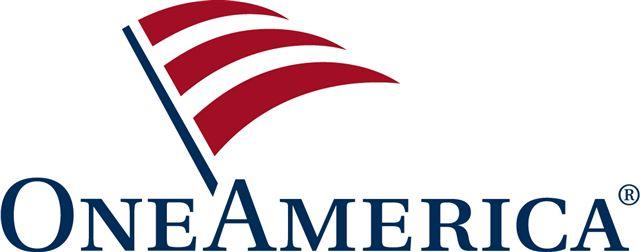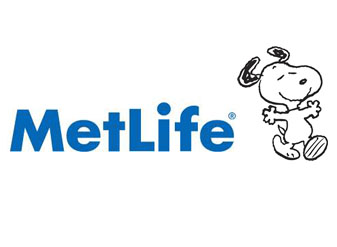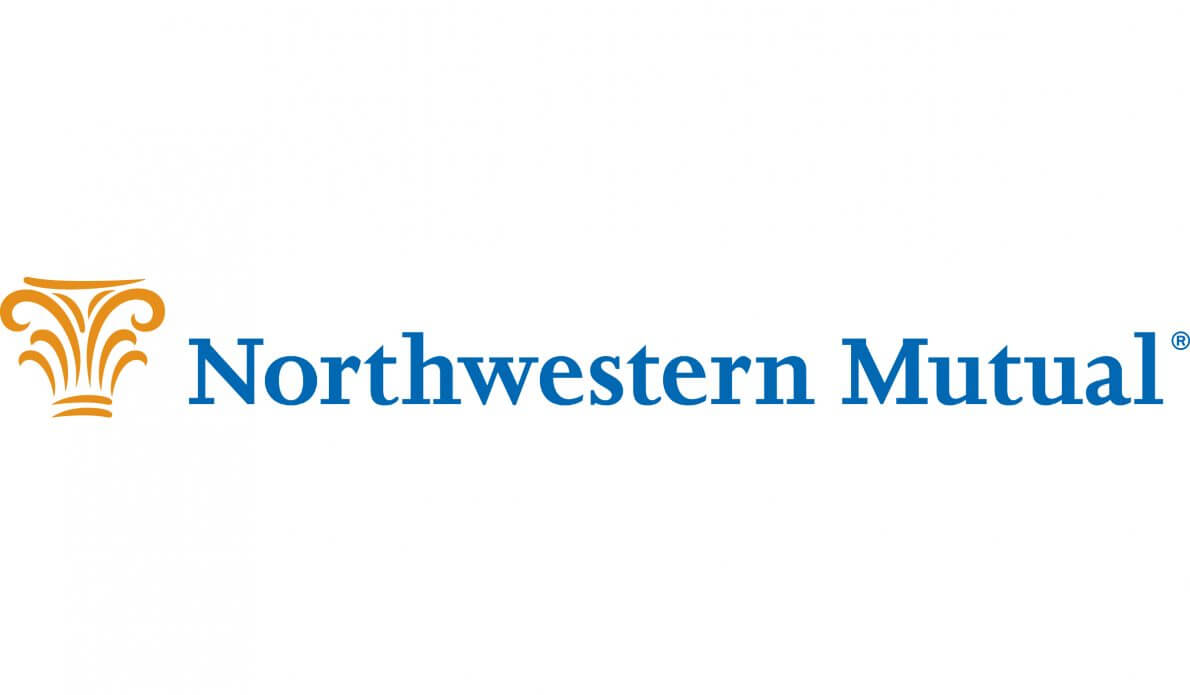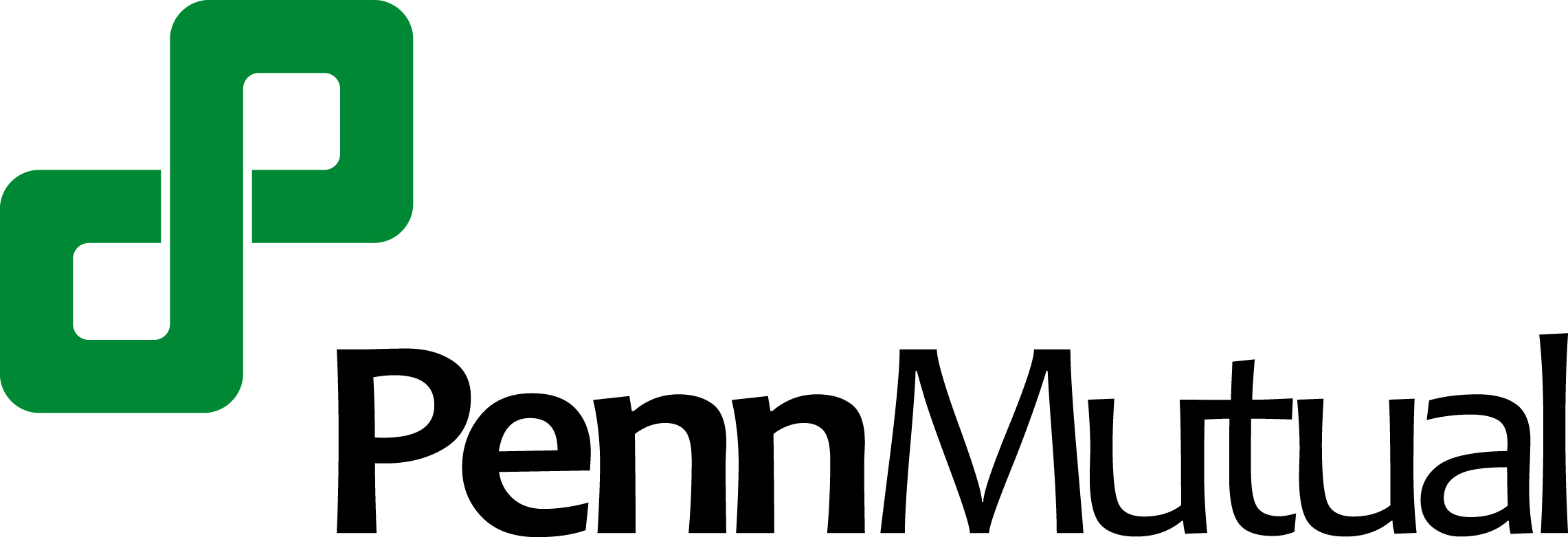It’s no big secret that we think whole life insurance is pretty awesome. Hopefully, most of you realized we were just being cheeky on our podcast last week when we declared that it sucked (though we don’t think it’s the answer to all the world’s problems).
We often receive questions regarding which company has the best whole life products. After giving this subject careful consideration, the time has come for us to make an official list. You’re very welcome!
First, a Little Explanation
We have to be very clear here: this is not an exhaustive list of the only carriers from which you should ever buy whole life insurance.
However, this is a list of the carriers we recommend if you plan to purchase whole life insurance designed to maximize cash value and use the policy as part of a low risk asset strategy/retirement income play.
We’ll come back to this point at the end as there may be some notable omissions.
The 2013 List
The list consists of seven carriers that we’ve determined—after extensive deliberation and policy design for prospective clients—are the top contenders for giving you the most potential cash value bang for your incoming premium buck. This list is in alphabetical order.
American United Life
Also commonly referred to as One America, which is the parent company’s name, American United Life manufactures a competitive—although somewhat quirky—whole life product.
It’s non-direct recognition, making it popular among the Infinite Banking die-hards, and it also includes a unique declining paid-up additions load. They’re surely proud of this feature, but we think it’s actually counterproductive; it creates a serious incentive to delay paid-up additions payments, which will decrease overall cash value growth potential.
Time lost can never be regained.
The Guardian Life Insurance Company of America
Colloquially known as “The Guardian,” this company has a rare commitment to the use of cash value life insurance as an asset. In fact, they own a website dedicated to the cause and paid a lot of money to develop a sales tool to compete with the likes of LEAP® and Circles of Wealth® to help their agents articulate the benefits of owning whole life insurance.
Our only word of caution about Guardian is to watch their career agents closely. They are in love with Guardian’s L99 whole life product.
This product is rather focused on death benefit and lags behind Guardian’s much stronger 10 Pay whole life product when it comes to cash accumulation and income generation.
Their 10 Pay product is designed to accept paid-up additions beyond 10 years (a wonderful feature). In order to do this, the policy has to be properly blended to open a higher modified endowment contract premium, but this should be easy for intermediate to advanced agents.
You won’t see Guardian strongly recommended by most independent agents for various reasons.
We work with them and include them in our recommendations as we truly feel they are a strong contender for cash accumulation strategies. They are direct recognition, but they pioneered the concept and certainly don’t let it drag them down too much.
The Massachusetts Mutual Life Insurance Company
When it comes to size and stellar financial ratings, MassMutual has it going on. Commonly referred to within Northwestern Mutual circles as their biggest threat, MassMutual has a super competitive product and an incredible reputation in the industry.
The fact that MassMutual is non-direct recognition and has one of the industry’s highest current dividend rates makes them appear really great on paper, and they have the historical performance to back it up.
Surprisingly, they don’t devote much time to outwardly promoting whole life as an asset class.
They have a number of brochures that highlight the benefits of whole life as a college funding tool and wealth transfer vehicle, but their efforts are more here and there than the concerted and focused attempt that other companies put forth.
Despite this slight lack of direction, their product is top-notch.
The Metropolitan Life Insurance Company
For years, MetLife was sort of a “blah” company. They had the whole Snoopy thing going for them, which helps when it comes to branding (although, as we know, branding is the refuge of the weak-minded). But, they always appeared somewhat lost when it came to identity.
MetLife failed to jump on the trend embracing guaranteed universal life insurance and neglected to build a competitive universal life product.
However, they dabbled a bit with the variable annuity business, built a decently competitive product, and actually attracted a lot of money to it—perhaps more so because of their name and large distribution network.
Despite being a demutualized public company, they’ve kept their participating whole life product, which is a very rare move. But, they were often ridiculed by the true-blue mutuals for being a public company with a rather lackluster whole life product.
And then, something changed.
They rolled out this product called Promise Whole Life, and suddenly, it looked like Snoopy wanted to play whole life insurance with the big boys. We have it on pretty good authority that they designed their Promise 120 product specifically to edge Northwestern out on price—touché, Snoopy.
And then, something changed again.
MetLife underwent another renaissance just this year when they showcased three new whole life products all focused on shorter payment periods and better cash performance. We honestly didn’t expect a lot out of them, but since the products were new, we placed them into the rotation of evaluated companies—and were we ever surprised.
Their paid-up at 65 whole life product is an incredible income generator, and their 10 Pay, though much more restricted with respect to available design features compared to Guardian and MassMutual, is no slouch.
We’ve been told that MetLife spent some time recruiting executive talent to reinstate them as a strong contender in the whole life insurance space. What we’ve seen so far indicates that they made some very good hiring decisions.
Northwestern Mutual Life
We know some of you are going to raise an eyebrow at this. Northwestern Mutual made the list? The company at which we constantly poke fun? Yup, they did—and for some very good reasons.
First, let’s be clear about something.
Our contention with Northwestern is less about them functionally as a company and more about their undeserved sense of self-excellency and self-importance. Their cult-like atmosphere and disdain for other companies, particularly the smaller boutique-types that manufacture really great products, are especially annoying due in large part to the personal preferences of yours truly (some of us think numbers matter more than company kumbaya BS).
Ahem.
Putting aside the fact that many of their agents tend to be intellectually dishonest with themselves, Northwestern doesn’t manufacture a bad product. It may not be the best as evidenced by our personal review, but its certainly nowhere near the worst, and Northwestern at least places importance on whole life as a strong, low-risk asset.
Here’s the other thing, and I really wish every other carrier in the industry would send someone to Milwaukee to study this Northwestern jewel: they have incredible customer service.
I don’t just mean they are good at it. I actually love having to call them for something. They may not have written the book on corporate culture, and they may not have written the book on how to build the absolute best whole life product, but they certainly did write the book on how to excel at customer service, and I implore other carriers to take a page from it.
Ohio National Life
Ohio National is a company that we adore and dislike almost in equal parts. They manufacture a really great product for cash accumulation purposes, and we’d love to be able to show people what it can do, but unfortunately, we can’t.
Whoever built their policy design (aka illustration) software was either pressed for time or got fired halfway through and they decided to go with what they had.
To put it in more direct terms, their design software sucks.
Additionally annoying are strange limitations on paid-up additions that seem extremely arbitrary, though we’ve been reassured and have discovered in practice that these limitations are circumventable. Still, “Trust me, it works out better than this in practice” is a cold comfort when you are parting with several thousand of your hard-earned dollars each year.
One big red flag we’ll note here is that this company and many of its agents are in love with their Prestige Max product.
They like to suggest that it was designed to be maximum (i.e., MEC) funded without requiring the agent to do any tweaking. On top of that, it comes with this great “preferred loan” provision that reduces the policy loan interest rate to increase your potential income generation.
It sounds great, but like Guardian, Ohio National has both a strange love of one product that really is only so-so for our purposes and a better product that they often fail to mention: Prestige Xcel Plus (and the “Plus” is crucial as that’s the product that can be blended).
It’s a nasty product to design due to Ohio National’s terrible design software, but it’s where you want your money if you’re seeking cash accumulation and eventual income generation.
The Pennsylvania Mutual Life Insurance Company
We remain amazed at Penn Mutual. Their career force is sitting on one of the best whole life products for cash value accumulation we’ve seen, and no one there seems to be aware of this fact.
The product is incredibly flexible, and as far as we’re aware, it has the most solidly built income-generating features.
Instead, most of their career agents are busy talking about guaranteed universal life insurance and indexed universal life insurance. There’s nothing wrong with that, and indexed universal life can certainly be a strong contender for life insurance as an asset class, but their products aren’t as superlative in either of these categories (they used to be but aren’t any more) as they are in the whole life space.
By now, someone has surely discovered the superior strength of Penn Mutual’s whole life contract—Blease data shows us that the vast majority of their whole life sales come from brokers as opposed to their career agent sales force, which is a very unique statistic when compared to other mutual companies with a career agent system.
Their paid-up additions rider is far more flexible than anyone else on the list, and with a proper design, those old worries about being committed to too large an outlay (something that has followed whole life for years) can be put to rest.
And that’s the List
Call it the lucky seven if you wish. We’d be most comfortable placing anyone’s money with these companies if cash accumulation is the key goal. It might look like we’ve snubbed certain companies, but the truth is that we’ve looked at them all and made this determination after much deliberation and real-life comparing for prospective clients.
If a company isn’t on the list, it’s either because they tend not to focus their whole life product on cash accumulation, or they simply don’t have a product that we’ve seen compete well against these seven.
Want help with setting up a policy for cash accumulation purposes? Contact us, and we’ll be happy to help you out.
Rank Order?
We’re listing these companies in alphabetical order and not in order of who we think is the best and the worst because such designations really depend on the circumstances of the potential buyer.
We don’t necessarily find that one company is always on top, so we can’t categorically declare one better than the other. In the future, we might cut the list down to the top five or maybe even three.
For now, we wanted to answer one question: Which life insurance companies offer the best products in terms of cash accumulation?
We will be updating this list each year, so we’ll be making additions and subtractions as needed. For 2013, these are our top contenders for whole life insurance when focusing on cash accumulation or income.












Brandon, As a broker for the last 30+ years and writing with most of the top carriers, I certainly do appreciate the value of WL insurance and even a properly structured and run UL; but your review of Ohio National is not all that accurate. I’d be happy to run any Ohio National illustrations for a comparison and answer any specific questions you or your readers may have.
Hi Paul,
I’m not sure how my review of ONL could be inaccurate. I’m certainly sure you’re not contending my assertion that they have a great product. So it must be an issue with my comments regarding their software.
ONL’s software does not allow: a deletion of the plus rider, reduction of death benefit, RPU status on the plus product, a max income solve for income with the plus product, a minimum db solve for specified premium, a variable PUA rider illustration for the plus product, an explanation on how the term insurance is reduced over time or any indication on when it’s projected to be replaced by PUA death benefit, and it very annoyingly makes me input client data when I just want to run some quick numbers.
I hate their software. I’m an end user. This is feedback, best to think of a way to improve upon things and make end users happier with services than tell them they don’t understand them. I understand them quite well. I’ve written several blended policies with ONL. I’ve brought my dislike to ONL’s attention numerous times, and the answer I get from the Home Office is, “yeah, we do have some restrictions, you should tell your client about our incredible ratings and general account performance.” 😡
Brandon, I am responsible for developing our illustration capabilities at Ohio National. Surveys indicate that 71% of our users find our software above average or excellent to use. That means that 29% of the users could suggest improvements. The most recent survey of users would suggest that 6% would agree with you that our software sucks! There are several points you make which are valid and indeed would be improvements to our software. Namely, allowing RPU on Plus policies will be an improvement. Thank you for the feedback. Also, dropping the Plus rider after the 7th year (avoiding some unpleasant MEC complexities) would also merit consideration. I can see the value. I also agree with you that Ohio National has excellent products. I do not agree that I should be fired! Some of your comments touch upon functionality that are rooted in sound business practices. Finally, we strive to keep communication channels open and I was somewhat disappointed to learn that you had suggestions that may not have reached my desk. I take great pride in our organization’s responsiveness to our partners. Look for the RPU enhancement this fall. If you would like to discuss other improvements please contact me.
Hi Albert,
Thanks for stopping by and taking the time to bring this information to us. First I’d like to clarify that I didn’t suggest you should be fired. I said that the software seemed as though the person designing it was fired half way through the development process.
I’m very happy to hear that these improvements are forthcoming.
As far as the number who are satisfied vs. those of who are not, there’s an overwhelming majority of agents who don’t design whole life policies like we do, that doesn’t make what they do right just because they are in the majority.
Your willingness to address this and take the time to type up what you did proves that Ohio National is an upstanding company and you are an upstanding individual who assists in making this fact so. We are delighted to be able to shine the light on this at The Insurance Pro Blog. Keep striving to make things better, and if there is more we can provide to assist with this, we’re more than happy to lend a hand.
Brandon:
I have the exact same complaints/suggestions regarding Ohio National and have had the exact same response from them…that’s the way we work, deal with it. Needless to say, I looked for other carriers, but would love to do more with Ohio National but hate trying to design cases with them.
I appreciate your insights into Prestige Xcel Plus and may check that out.
Could you tell me which companies on your Lucky 7 allow independent reps?
Many thanks and great review!
Have you ever heard of the Lafayette Life Insurance Company? They offer similar programs as discussed above. Thnaks
Hello,
Yes we’re very familiar with Lafayette Life. There are a few reasons they do not make our list.
Is there something “bad” that would eliminate Lafayette Life Insurance Co from your list. I have an active policy and am concerned! Thanks
Our biggest problem has been a very loose approach to MEC testing that the home office has communicated to me and others. Their products are so-so in our comparisons. Their customer service is eh.
As far as stability of the company goes, I don’t think they are going anywhere anytime, soon. I wouldn’t worry too much about the company to in terms of that, or in terms of the product performing really badly compared to what you are expecting.
So there were probably better options when you made the purchase, but now that you are in, I’m not so sure there’s much you should do or worry about.
What do you think of a company called LSW?
Hi Miriam,
Not exactly a top tier company. Their product looks pretty good on paper. It has a fair number of functional annoyances, and the financials are a tad iffy in our book.
I am looking to write with another whole life company. I currently write with Lafayette. How is Mutual Trust? What makes Met better than Lafayette?
Hello,
I think I’d stick with Lafayette Life over Mutual Trust Life. I would use this list above to guide you in adding whole life carriers. Met over Lafayette Life in large part due to the company size and, underwriting capacity, history with the product, customer service, and product design.
I was pleased to see the Guardian comments. As a CFP working with the highly compensated/ high net worth clients, I have used Guardian as a core company for years. I analyzed the top-ten highly rated companies twenty years ago, and concluded that Guardian consistently outperformed year after year, particularly when doing twenty year IRR look backs on Whole Life products. There’s no arguing with actual performance, who cares about illustrations.
Cannot tell you how pleased I have been to also use their “own occupation” disability contracts as well. These have always paid out with very little hassle, compared to Provident, Unum, Paul Revere et al, a very important reality for my doctor and dentist clients.
The downside, of course, is extremely ponderous and detailed underwriting, which is partially why the financials are so good: excellent risk management and
investment yield equals a jewel of a company.
Separately, why isn’t NYL also on the list? They do not perform as well as Guardian, but still are a substantial company, certainly financially stronger the Met Life, who are broadly marginal at best.
Hi Sean
Re: NYL
They really don’t like the cash value life insurance play based on blending, which I’d contend is the only way to approach it.
I really wouldn’t label Met as marginal at best. They generate almost more investment income in a quarter than Guardian has in assets. They are both good companies, especially when cash values are the focus. NYL is better suited for the permanent death benefit arena, and there is nothing wrong with being more focused on that side than the other.
Oh life insurance!
Hi Brandon,
I’m surprised I didn’t see New York life’s custom wl policy in your review, which is geared toward building cash value. Any particular reason. Thanks!
Hi Mike,
There is actually a reason they didn’t make the list. And we have plans to detail while they and many others didn’t make the list late this year. Stay tuned for that.
Thanks.
Please comment on the Fraternals, particularly Thrivent which has just hugely expanded it’s customer base . New
York State insurance Dept. brochure used to have a one sentence reference: ” Always check your elegibility for fraternal insurance before purchasing . “
Hi Ed,
Sorry, but I can’t comment or reply to such a vague question. If there is something more specific you’d like an opinion on, we’d be happy to weigh in.
Interested to hear your opinion on how Lafayette Life Whole Life products match up to these above
Hi Brian,
They have a rather poor paid-up additions rider with a lot of provisional language that doesn’t appeal to us. They have a lifetime limit on paid-up additions at $1,000,000 and an annual cap at $100,000. Their underwriting is a large obstacle at times. Customer service leaves a lot to be desired.
There are so many better options.
On the plus side, they pay their agents/brokers really well. :thumbsdown:
Hi Brandon
I am looking at buying a WL policy as an alternate saving mechanism. Out of Metlife, Guardian and Mass Mutual, my limited research on google showed that Mass Mutual pays out the highest dividends. From your analysis is MassMutual better specially when I am looking at generating as much cash value as possible?
Thanks much !.
Best regards
Ajay.
Hi Ajay,
It’s hard to say which company would work best for your particular situation. We would need to know much more of the particulars to make any sort of recommendation. If you’d like to have us evaluate your situation, use the contact us page so that you can speak with us privately with your details.
One thing is for sure, please don’t base your decision on which policy is best for you by looking at which company has the highest dividend rate. That is not a great measure as the calculation for credited dividends varies from company to company. In other words, saying company A pays 7% and company B pays 6.5% doesn’t mean that company A is better than company B. Hope that helps.
This is comical. Your list is pretty good, but how about a third party study showing actual cash value performance and death benefit returns over the past 20 or so years. There is a company called Full Disclosure who does this study and its the definitive list of best companies to have WL with. Maybe instead of your opinions you should think about using facts since you say the numbers are what matters. To give you the summary, buy whole life from Northwestern Mutual, Mass Mutual, New York Life, then Guardian in that order. Any of those and you’ll be fine.
The name of the Company was Blease Research and the product they sold was called Full Disclosure. Since you don’t appear to know that I’m guessing you also don’t know it’s a now defunct company and that when it went out of business the 10 year historical comparisons did not paint a pretty picture for Northwestern.
I’m also guessing you are unaware of the fact that all of the data collected for these reports were self reported numbers from insurers based on whatever block of whole life business they wanted to report so long as it existed during the time period with no real standard for reporting.
Trying to use flawed data that is now almost three years outdated to guide decision making on products…now that’s somewhat comical. NML has trained you well.
I’m aware of Roger Blease and his company. I’m aware that when he died unexpectedly at age 48 no one picked up the torch and the full disclosure report has not been published since. I’m also not that concerned about 10 year performance since I’ve never sold nor will sell whole life as a 10 year savings vehicle. The companies I mentioned above dominate on the 20 year and longer numbers and are also the largest safest (highest rated) players in the field. Also the study has been done for decades and the same companies I mentioned have consistently been at the top. So how do you forecast which companies will do the best when illustrations are often not an accurate projection of actual performance. What resources are you using? Are you looking at expense, persistency, mortality, general account investment results?
Your list is pretty good, I know why some make the grade, but it would be nice to know why you favor some companies over others, other than policy design.
There are a multitude of facets we review when making this decision. They include all of the considerations you mentioned (with persistency being a pretty low priority and investment performance over time being one of the larger ones) as well as several considerations not mentioned like reputation of the customer service department and policies on loan processing turn around.
Design is most critical, however, since this list is purely focused on purchases that seek to maximize cash value. This isn’t the list of the best overall or the best for death benefit, etc. There are plenty of situations when one would be best served to ignore this list and seek out alternative considerations during a purchasing decision because their focus is not on cash accumulation.
Example, if one were looking to fund an ILIT with whole life insurance, this list is largely useless to him or her.
This list is from 2013. Is the list the same or did any other companies make the list?
Thanks,
Ted
Hi Ted,
We updated the list in 2014 and that was the last update, see here.
At the moment, we’re working on a more comprehensive review of insurers that we hope to release a little later this year. Be on the look out and/or sign up for our emails to be notified.
What is your thoughts on Security Mutual of New York?
Thanks,
Ted
Decent company, would like to see higher ratings. Would personally like to see a higher surplus position especially given their small size. I have always believed they are a rather well run company, but they struggle with many of the problems a smaller insurer would face. I’ve had a number of conversations with HO employees there and I can attest to the great people who work at the company.
How about Forester’s?
Not one of our picks for a top whole life choice when seeking cash accumulation.